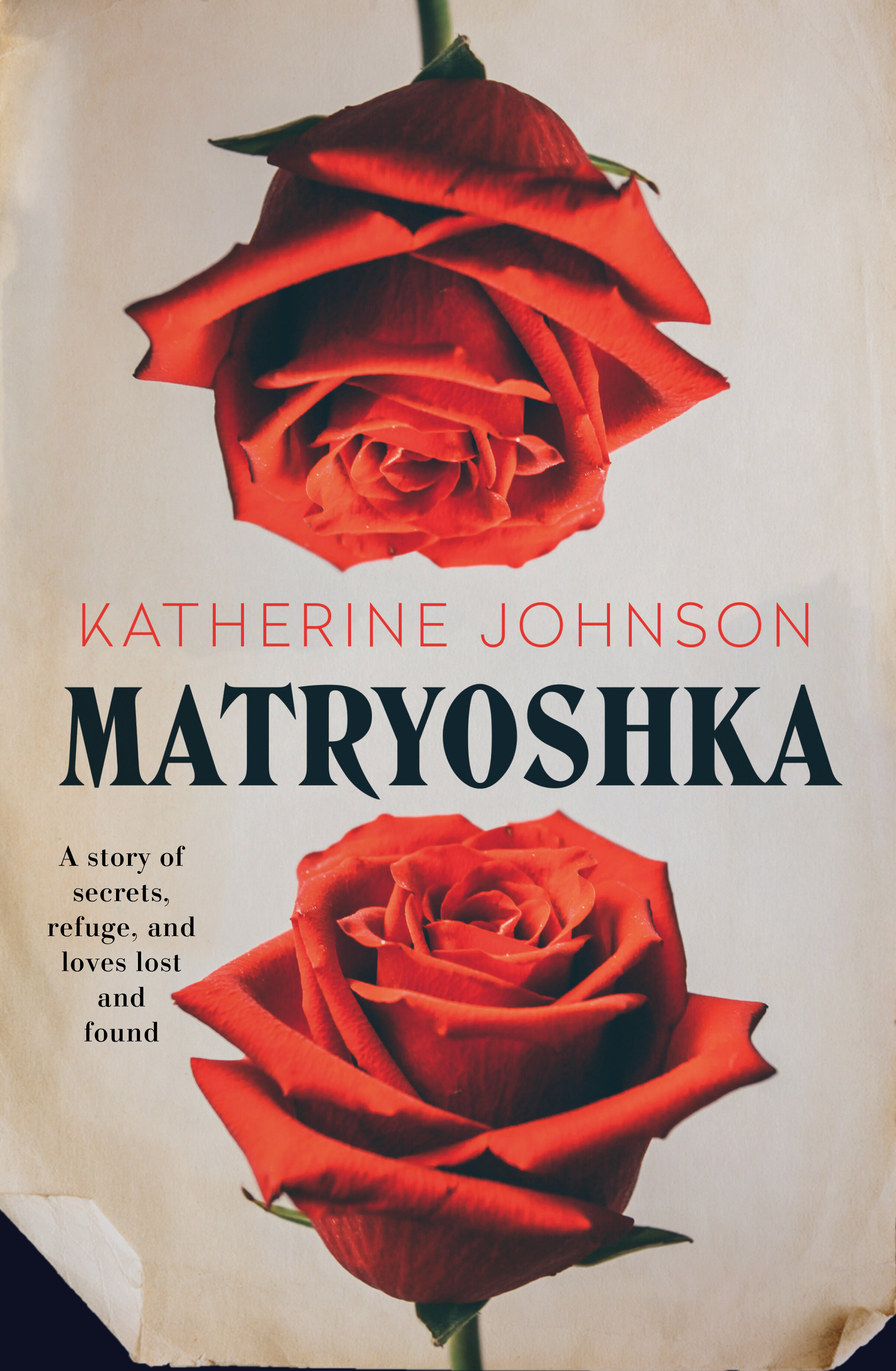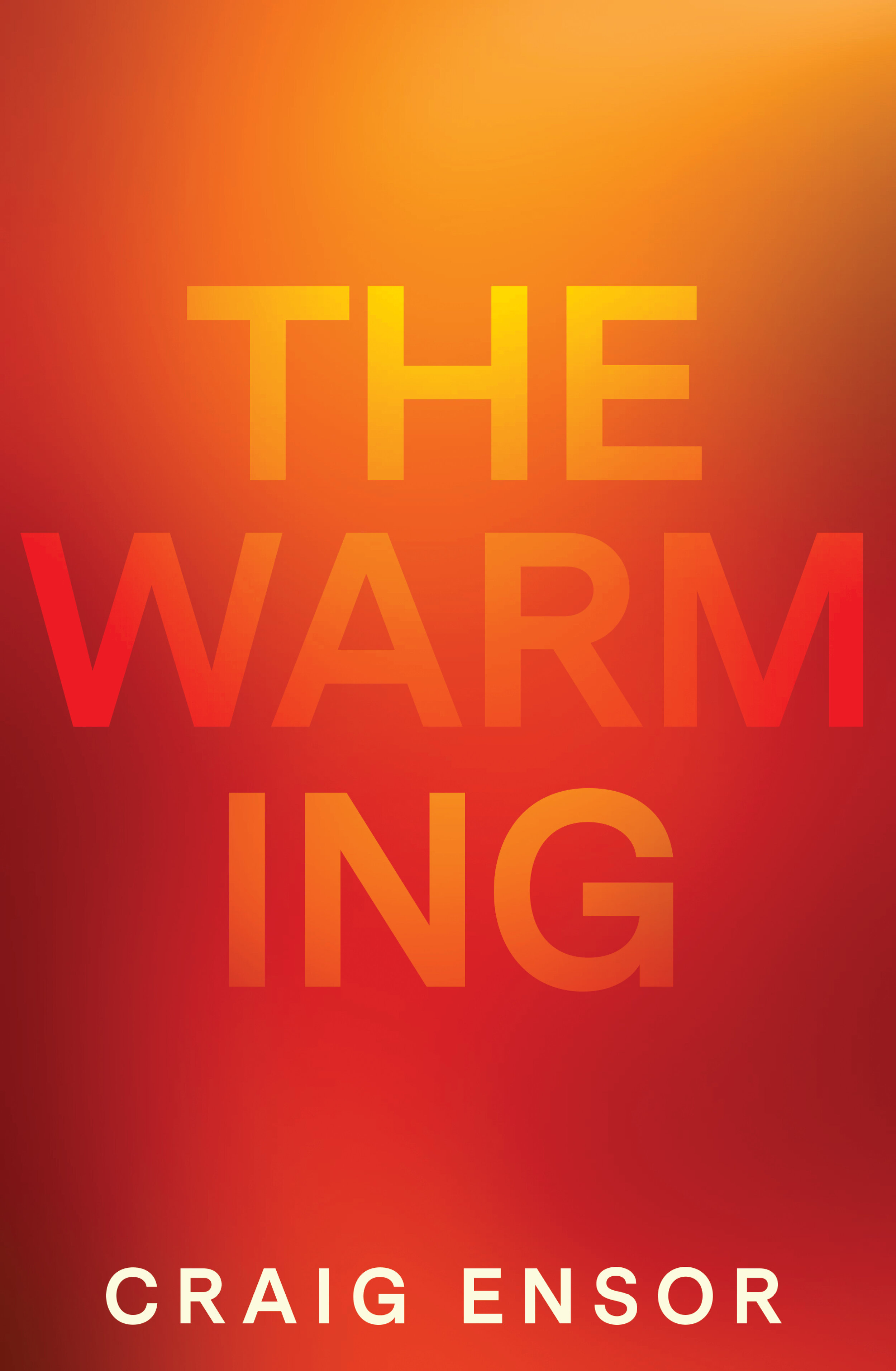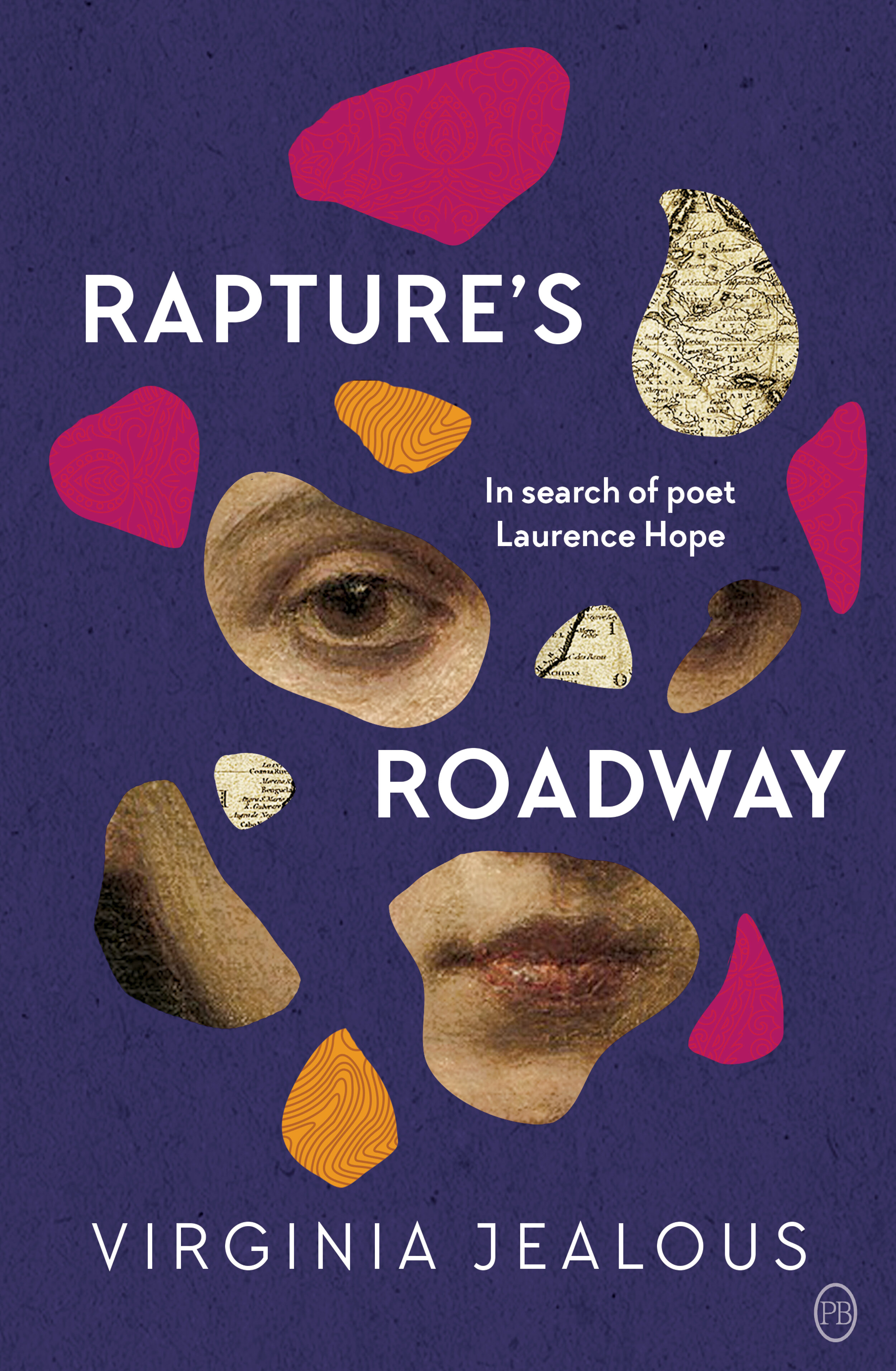Launching a Book Online in the time of Corona
The book launch is arguably one of the most exciting parts of releasing a book. But what happens when a unexpected pandemic comes in like a bulldozer and blasts apart your plans? Christine Bell of No Small Shame is here to tell you all about her experience with launching her book in a time of COVID-19.
The book launch is a rite of passage for a debut novelist. Well, for any writer publishing a book really. It’s something you muse about during the long journey to publication; who you’ll invite, a cool venue to hold it. What it’s going to be like showing off a real book after all that time working, writing, waiting!
And then … Corona!
I’d booked my launch for No Small Shame at Readings Hawthorn way back in December, I was that excited! After attending many such similar events, it was finally going to be my turn!
Hmm … Corona!
I returned from a writing residency on Norfolk Island at the end of February believing I had four weeks to organise invitations, nibbles, wine, an outfit, and to get out and introduce myself to booksellers, knowing that Ventura Press’s wonderful distributors, Simon and Schuster had been out and about already and the book was on pre-order. Then the Corona sky began to darken as the nightly news went from worrying to more urgent to lockdowns imminent.
Mid-March, on the Saturday, I was a guest speaker at the Women Writing History Day at Eltham Library. It was my first chance to publicly speak about No Small Shame, to sell and sign books, and I was so delighted to be able to do so in advance of the release date. I had the thrill of selling every copy I’d taken and signing each book for the purchaser with my brand new author signature. (As opposed to the one I use on my credit card!)
With the Corona news worsening, I handed out invitations to my launch that day with a pang of trepidation. There was ‘no hugging’ ‘no kissing’, though there were lovely, quiet words of congratulations. ‘We’ll do the real thing at the launch!’
That night, the news made lockdowns sound imminent! My stomach began to knot, but I was amazed at how well I was handling the prospect that my launch could be cancelled. The next day, orders to self-isolate, avoid crowds and any unnecessary gatherings began to bode ill. Still I remained calm!
The next day came the cancellation.
There were tears! And disappointment. But, I do have to say that any misery quickly dissipated, thanks to the instant and voluminous outreach by the online writing community to all authors who’d had their launches and events cancelled. Along with some particularly wonderful offers to assist debut authors.
That same day, fellow debut author, Kirsten Krauth set up a fabulous new Facebook group, Writers Go Forth. Launch Promote Party to provide a forum for authors who’d lost their launches and events to promote and celebrate the release of their books. Opportunities and offers began to flood in and within days I had several fabulous blog and interview spots lined up and two very exciting guest spots on podcasts. Holding a launch online began to seem a real possibility too – though I’d no clue how to go about it. Even, a few days later, as I scheduled and posted news of my virtual launch, I wasn’t sure how it would all work. At first, the plan was for the wonderful Alison Goodman, my launcher, writing buddy and friend, to come to my house, so we could either record or livestream proceedings. We decided, being online, we needed to make the launch more interactive than just speeches, so we’d do a short QandA.
Within a matter of days though, social isolation regulations became more stringent, the need for care more urgent, and the plan changed to prerecording the launch from our separate houses. Perhaps via Zoom.
I wasted several stressful days trying to work out if we could livestream from separate houses, or run a pre-recorded video during a livestream. It’s allegedly possible if you have the know-how and technology. We did not! So we reverted to Plan B, to pre-record the actual launch and then once it played on the night, I’d flip to a livestream. Right up until the moment that the livestream worked, I wasn’t sure or convinced it would; despite having a phone tutorial on the process from wonderful author and tech whiz L.J Owen.
There were a few little hiccoughs along the way! Facebook didn’t deliver all my invitations. Apparently, they have a guest limit and a send only a few ‘at one time’ limit. Some guests were unable to comment during the event. I’m still not sure if it was the group Facebook settings or the guest’s privacy settings? However, I was thrilled that most people managed to let me know that they were there either in the comments, by text, Messenger or email.
I’d seen from others’ experiences how hard it is to search through all the lovely messages and comments to find the questions, so my daughter was on stand-by (at her house) to text me any questions via my laptop.
I am thrilled to say now, that on the night, all went exactly to plan. The video uploaded and played; and when it finished, I successfully switched to the livestream. I was hugely relieved though to see that first message appear in the comments, letting me know that someone was out there and watching. Questions duly arrived via text giving me the chance to talk about the journey of writing No Small Shame and share some of the research and background to the novel. I’m still amazed how natural it all seemed. And it was an absolute joy to know that so many family, friends and peers were there watching, including many that couldn’t have been at a physical launch here in Melbourne. Sadly I did lose a few guests when we switched to livestream who’d not realised the launch was to continue.
It all felt like a real celebration! And strangely, I didn’t feel solitary or socially distanced at all. No, the night wasn’t what I’d planned; but that didn’t lessen the joy of holding up No Small Shame, knowing it was out in the world – finding readers – and being read.
If you’d like to learn more about No Small Shame (or even get yourself a copy!), you can find more information here. To hear more from Christine, check out her website: christinebell.com.au
A screenshot from Christine’s online launch with fellow author Alison Goodman
A Christmas Wishlist
Christmastime is nearly upon us and if you’re in need of some bookish ideas, Ventura has you covered. Here’s our round-up of the best titles to gift loved ones this holiday season.
Christmastime is nearly upon us and if you’re in need of some bookish ideas, Ventura has you covered. Here’s our round-up of the best titles to gift loved ones this holiday season.
For the lover of a best-seller:
Whether it’s a thoughtful gift for your partner or a stocking filler for your friends, you can’t go past a best-seller on Christmas. Paris Savages by Katherine Johnson is based on the true story of three Badtjala people from Fraser Island who travel to Europe to perform as part of ethnographic exhibits in the 1800s.
With praise from Alice Nelson, Kate Holden, Peter Cochrane, and reviews from Better Reading, Good Reading and more, this is one new release not to miss!
After being shortlisted for an Aurealis Award, the MUD Literary Prize, an Australian Book Industry Award, the Readings Prize for New Australian Writing and a Saltire Literary Society Award (Scotland), A Superior Spectre by Angela Meyer has taken the world by storm. If you’re looking for genre- and mind-bending literary fiction, go no further.
For the lover of heartwarming and hilarious women’s fiction:
For many of us, Christmas books means gifting the best new beach reads to fill the time on our summer break. Our November release, The Changing Room by Christine Sykes is just that. Entertaining, captivating and easy-to-read, you’ll be drawn in by the strong character developments and social justice story. Read Better Reading’s review here.
And we can’t forget about other releases from earlier this year! The Age of Discretion by Virginia Duigan is a hilarious and provocative novel that will leave you in stitches one minute and tears the next. A gift that any women in your life will love.
For the non-fiction reader:
If your loved ones are book lovers, then they might already have a copy of Jane Sullivan’s Storytime, but if not, it’s the perfect present. A bibliomemoir delving into your favourite childhood books, Storytime is a wander down memory-lane and a reminder that childhood books have a deep impact on who we become.
And for those who love essays, Split by Lee Kofman is the go-to. Acclaimed Australian writers are brought together in this anthology of writing about leaving, loss and new beginnings. It’s a book to gift to any loved one who has experienced grief, and the overwhelming changes that can come after - all tied together by the literary prowess of Lee Kofman.
For the business minded:
Venturing into the New Year means creating new years resolutions. Maybe it’s time to take the career step you’ve always dreamed of? Career to Calling by Annie Stewart is the guidebook for turning your calling into a reality, from lifetime career coach Annie Stewart. A perfect gift for university leavers, back-to-work mums or anyone in your life who needs a nudge in the right direction.
Then there’s Breaking the Banks by Joseph Healy, the insider’s guide to what went wrong with Australian banking, from a career banker. Exploring the criticisms from the Royal Commission and ideas of how to improve, this book is the gift to give the financially-savvy person in your social circle.
For when you can’t decide what to give:
With climate change gracing the news at all hours of the day and fires burning all over the country, what happens when this becomes a reality? The Warming by Craig Ensor is a climate-fiction-romance about humanity at the end of the world. A stocking-filler to give someone who needs a little bit of hope in these times of crisis.
Happy shopping and Merry Christmas from the Ventura team!
The Art of Book Cover Design with Alissa Dinallo
Alissa Dinallo’s designs grace the covers of many Ventura books - from the more complex Paris Savages, Matryoshka and Raptures Roadway to the minimalist cover of The Warming. We chatted to Alissa about the origins of her design career, the evolution of a book cover, and where her inspiration comes from.
Alissa Dinallo’s designs grace the covers of many Ventura books - from the more complex Paris Savages, Matryoshka and Raptures Roadway to the minimalist cover of The Warming. To celebrate the release of Paris Savages, we chatted to Alissa about the origins of her design career, the evolution of a book cover, and where her inspiration comes from.
Tell us a little about yourself – how did you get into book design, and what do you love about it?
While I was at university (UTS) I met a brilliant tutor by the name of Zoe Sadokierski, who was a former book designer from Allen and Unwin. She really opened my eyes to the possibilities of book design as a career. As I was completing my degree, I managed to get a job at Allen and Unwin archiving books. Once I was in-house working I got to understand how the design process worked and eventually applied for the role of junior designer. After 3 years at Allen and Unwin I moved to Penguin Random House. At the end of 2015 I decided to start my own business as design freelance for all publishers in Australia and worldwide.
When you received the initial cover brief for Paris Savages, what was your process of coming up with the resulting concepts? Talk us through your process.
This is the third of Katherine’s books I’ve designed. I love her writing, and have a good understanding of the mood and tone she conveys in novels. I wanted to create something dark, naturally beautiful and subtly Australian. I knew I wanted to use flora in an eye catching, clever way. I was originally inspired by the beautiful Ernst Haeckel illustrations, which have a great sense of dark, yet beautiful mystery. As I worked on these concepts, Ventura felt we needed a human element, so I focused on creating covers that hinted at a female character. I tried overlaying illustrations of Australian flora onto a woman’s skin/face. Whilst working through these concepts I started collaging a woman’s face with leaves and flowers. And that’s how I eventually arrived at the final cover.
some early concepts of Paris Savages
How long does it usually take you to come up with concepts once receiving a cover brief from the publisher? Do you have a number of concepts you aim for?
Depending on the urgency of the cover, it generally takes me around 3 weeks. This gives me time to read the manuscript properly and come up with key imagery I think best illustrates the text, whilst keeping it commercial/appropriate to the books genre. I don’t aim for a certain number of roughs, but once I’m on a roll I can produce a lot, and I generally need to cull them before sending them off.
Where do you draw your inspiration from as a designer?
I’m always looking at how image and text interact in the world. I’m always taking note/photos of cool shop signs, menus, movie posters, artworks, logos, vintage books, and other graphic design (the list is honestly endless). Social media platforms like Instagram and Pinterest also allow me to catalogue inspiring visuals so I can look back at them when I receive new briefs.
What is the aim of any cover you design?
There are a lot of things you want to achieve when designing a cover – from good design to a product that sells. But I think the most important aim for me is to honour the work of the author, and give their hard work a brilliant face for the world.
Do you have any other memorable Ventura covers you’ve worked on?
I have to say, Paris Savages is one of my all time favourite covers with Ventura. I also loved working on Katherine’s previous books (The Better Son and Matryoshka). More recently I loved working on The Warming and Rapture’s Roadway.
What Makes a Good Author?
A writer becomes an author only when they are published, and because publishers and authors both need each other, ours is the ultimate symbiotic relationship. So what makes a good author? And what is the ‘author DNA’ we speak of at Ventura?
by Ventura’s Director, Jane Curry.
Writing is a solitary and fiercely intellectual craft that is also a sheer slog. To hand over your work to a third party is an act of deep trust and one that good publishers do not take lightly. A writer becomes an author only when they are published, and because publishers and authors both need each other, ours is the ultimate symbiotic relationship.
So what makes a good author?
Well, the most important attribute is clearly the writing. It should be writing that inspires and transports the reader. It should be stories that you don’t want to finish, as you love the alternative world they create: the imagery, characters, plot twists, pace and revelation. For nonfiction works, it should be ideas that challenge and change our worldview. Good writing creates the lodestar of publishing: word of mouth. Good writing can create the kind of buzz that drives people to bookshops in a way that advertising and publicity alone cannot achieve.
So assuming an author writes well, what else makes a good author?
The answer at Ventura is ‘author DNA’: an expression coined by the wonderful and much-missed Simon Milne during one of our strategy workshops. We had conducted a deep dive into the performance of our titles over the previous 12 months, which included reviewing the genre, price, positioning and author. We found that one of the key factors in the success of a book was the right author DNA.
This means that the author must be the unabashed champion of their own work, with a strong commitment to success and the motivation to support their work long after the launch champagne has gone flat. A healthy ego is also important: if the author is to really shine on the platform we publishers create, they have to enjoy the limelight.
I often refer to publishing as an energy transfer—our passionate belief in the book must be transferred to sales reps, booksellers, the media and ultimately the reader. It is impossible to achieve this without the author being a key partner or, dare I say, a stakeholder. Maria Katsonis, the author of our bestselling book The Good Greek Girl, has gold-standard author DNA. Maria worked every facet of the market upon launch and continues to promote her books many years after publication. We call this the long tail: library talks, book clubs, events, articles—they all contribute to backlist sales and provide a platform for future works.
The book market is flooded with 5000 new titles every month, so much is made of ‘author platform’. What is the author’s background, their profession, their story? What makes them different to the rest? These details can provide the key to achieving cut-through at retail. Publishers seek this information to see if there is a hook on which to hang a marketing campaign or start an author profile. Authors with a strong social media presence provide a ready market for their books and are largely published because of it. But for other authors, social media is irrelevant—it is their very gravitas that impresses.
In small companies such as Ventura we view our stable of authors like our kin. We seize every chance to promote them both here and overseas, whether frontlist or backlist, at book fairs or in impromptu settings. We maintain a very strong sense of alliance and collaboration, and I am convinced this commitment has contributed to our success, as we genuinely believe in every author we publish.
There are some potential authors who do need a reality check, so that their expectations of our publicity campaign are realistic. When meeting a first-time author I always say, ‘I cannot make you famous’ before we sign, and remind them that becoming a household name takes many years. When I published Robin Barker (Baby Love) at Macmillan, sales were slow initially but after I negotiated a monthly column at the Australian Women’s Weekly her name slowly built to become the brand that it is today.
I also say to authors that I cannot dictate to booksellers what books they should stock—it is ultimately the bookseller’s choice. We publishers can persuade with the strength of the concept, the profile, the marketing and the writing itself, but being stocked in bookshops is not an automatic right just because the book is in print—a fact we clearly articulate with authors.
As a career publisher, I can say that the best authors are the ones that submit a stunning and compelling manuscript, take a receptive position on editing and cover design, have a healthy sense of self to cope with the publicity trail, and the stamina to keep going into the backlist years. And a new book every other year please!
This article was originally published in Books + Publishing.
How To: Create the Perfect Book Title
You may be surprised to read that the title of your book is one of the most important marketing strategies you have as an author.
You may be surprised to read that the title of your book is one of the most important marketing strategies you have as an author. The title is most often how a person will hear about your book for the first time. It has the power to lure the reader in, capture their imagination, or let them know what lies between the pages.
In that moment it doesn’t matter if you’re an unknown author, whether your book is hardcover or paperback or digital, if the genre is unfamiliar, or the price is expensive. A title that successfully captures the essence of your book will help overcome all those obstacles, which is why you need to spend as much energy crafting and editing your title as you would the rest of your manuscript. The last thing you want to do is underrate your book with a poorly crafted title!
One of the best ways to start thinking about your title is to research what makes a good title. Think of a title that has tempted you into picking up the book or clicking on the cover – what was it that sparked your curiosity? What was it that made it memorable for you? A strong title should be distinctive but not distracting. Some titles we love here at Ventura include:
The Curious Incident of the Dog in the Night-Time (Mark Haddon)
To Kill a Mockingbird (Harper Lee)
Catch-22 (Joseph Heller)
Between a Wolf and a Dog (Georgia Blain)
The Museum of Modern Love (Heather Rose)
Paris Savages (Katherine Johnson)
And just in case you weren’t convinced yet, here is further evidence of how important titles are. Consider what these well known books could have ended up with as titles.
The Great Gatsby could have been Among Ash-Heaps and Millionaires
1984 was suggested by Orwell’s publisher, but it was originally The Last Man in Europe
To Kill a Mockingbird was simply Atticus
Pride and Prejudice could have been First Impressions
War and Peace was originally titled All’s Well that Ends Well
Of Mice and Men was originally Something That Happened
Gone with the Wind was Tomorrow is Another Day
Lord of the Flies was originally Strangers from Within
EVERY GOOD BOOK TITLE SHOULD:
Be unique and personal to your story. The easiest way to tell if you have an original title is to Google it. While titles aren’t subjected to copyright, and in theory you could name your book Harry Potter and the Philosopher’s Stone, it’s probably not a good idea.
Be memorable. Your title should be one that readers will never forget, so that when they want to recommend it, or have it recommended to them, they remember what they are looking for when they get to the bookstore or are searching for it online. A good tip here is to select precise nouns and strong active verbs.
Provide insight. Many readers consider your title twice: once when they pick up the book, and a second time when they finish reading. What can the reader expect from your book? Provide a glimpse into the world of your book, something that will become clear as the reader comes to understand the characters, the plot, or the argument of your book.
HOW TO ACHIEVE TITLE GREATNESS:
Relax. Stress inhibits creativity and won’t help you. If you haven’t yet finished your manuscript, then focus on that. The telling of the story or the finishing of your argument may uncover the perfect title in the process.
Brainstorm. We recommend a minimum of five titles, but don’t feel you have to stop there. Keep going if you want until you reach 20 or 30, or even 50 titles!
As you brainstorm, try to think of you book in different ways.
Who is the book about?
Rebellious Daughters (Edited by Maria Katsonis and Lee Kofman)
The Girl on the Train (Paula Hawkins)
My Cousin Rachel (Daphne Du Maurier)
What is the book about?
The Hunger Games (Suzanne Collins)
The Rosie Project (Graeme Simsion)
The Night Circus (Erin Morgenstern)
When does your book take place?
Nineteen Eighty-Four (George Orwell)
The Last Anniversary (Liane Moriarty)
Love in the Time of Cholera (Gabriel García Márquez)
Where does your book take place?
Camino Island (John Grisham)
The Light Between Oceans (M. L. Stedman)
Black Rock White City (A. S. Patric)
Why should someone read your book?
See What I have Done (Sarah Schmidt) – What has she done?
The Many Ways of Seeing (Nick Gleeson with Peter Bishop) – What are the many ways of seeing?
A Girl Is a Half-formed Thing (Eimear McBride) – What is a girl only half-formed?
Also as you brainstorm:
Don’t forget voice and point of view – make sure your title is consistent with the point of view in your story. For example, if your crime fiction book is written in third person, don’t call it My Encounter with A Killer.
Avoid sabotaging your plot with your title – if your book is a mystery or suspense, don’t give away the ending on the cover! By the same token, don’t take your title from the first or last lines of your story as this can dampen the curiosity for your potential reader and also comes across as trite.
Make sure your title matches your story. This is the most important rule of coming up with your title. If you crafted your title before you finished your story, or even think of a great title during your brainstorm session, it’s critical that you can clearly state how this relates to your story.
If your non-fiction book is part of branding, make sure this is worked in to the title, for example, Impact Press author Renee Mill uses her brand Anxiety Solutions in her book, Anxiety Free, Drug Free.
EDIT IT!
Your title, just like your manuscript, will need to be edited and polished. The team at Ventura will help you come up with the best title that will have the most cut-through in the market, will have the most appeal to readers, while still successfully reflecting the content of your book.

































